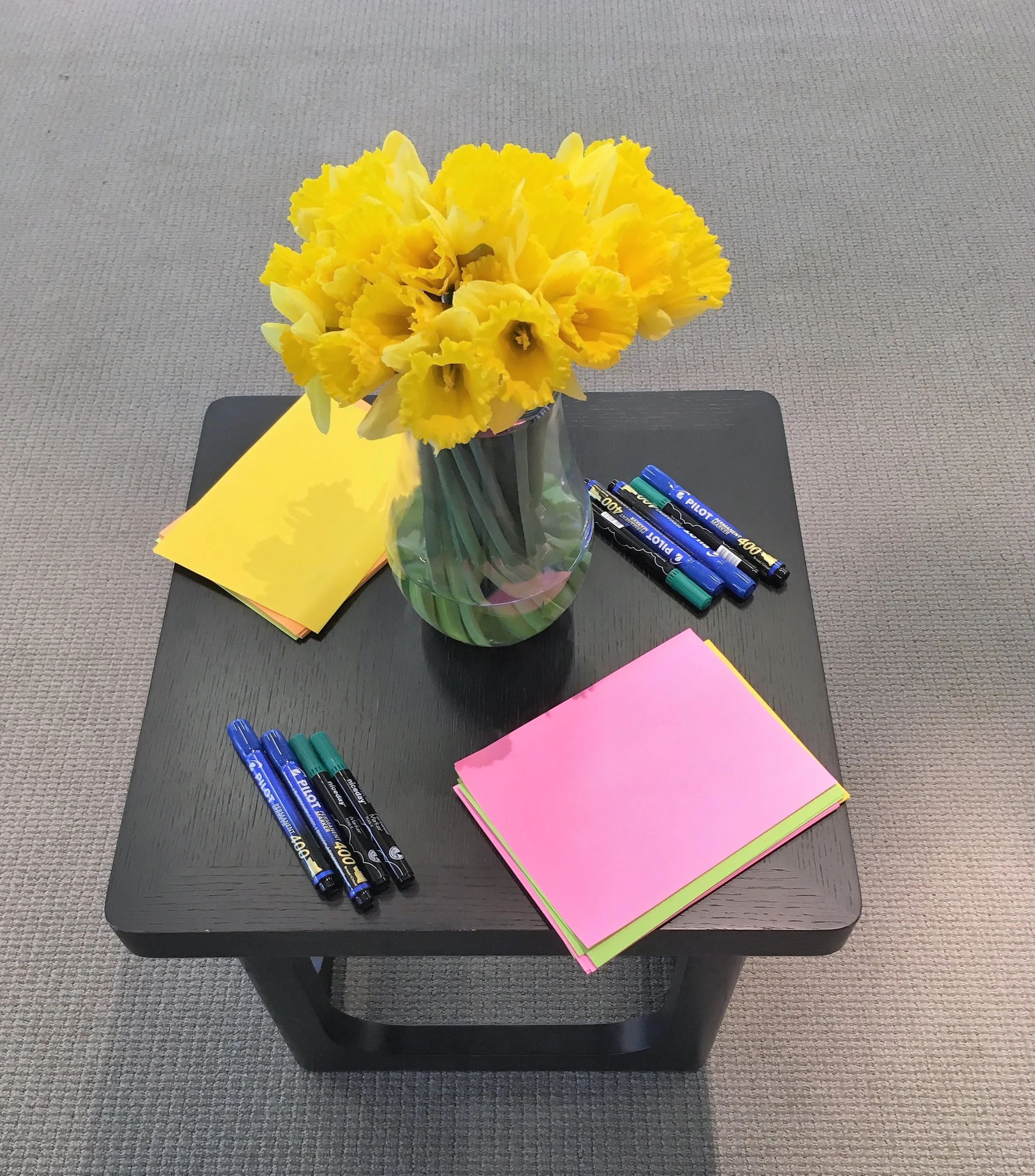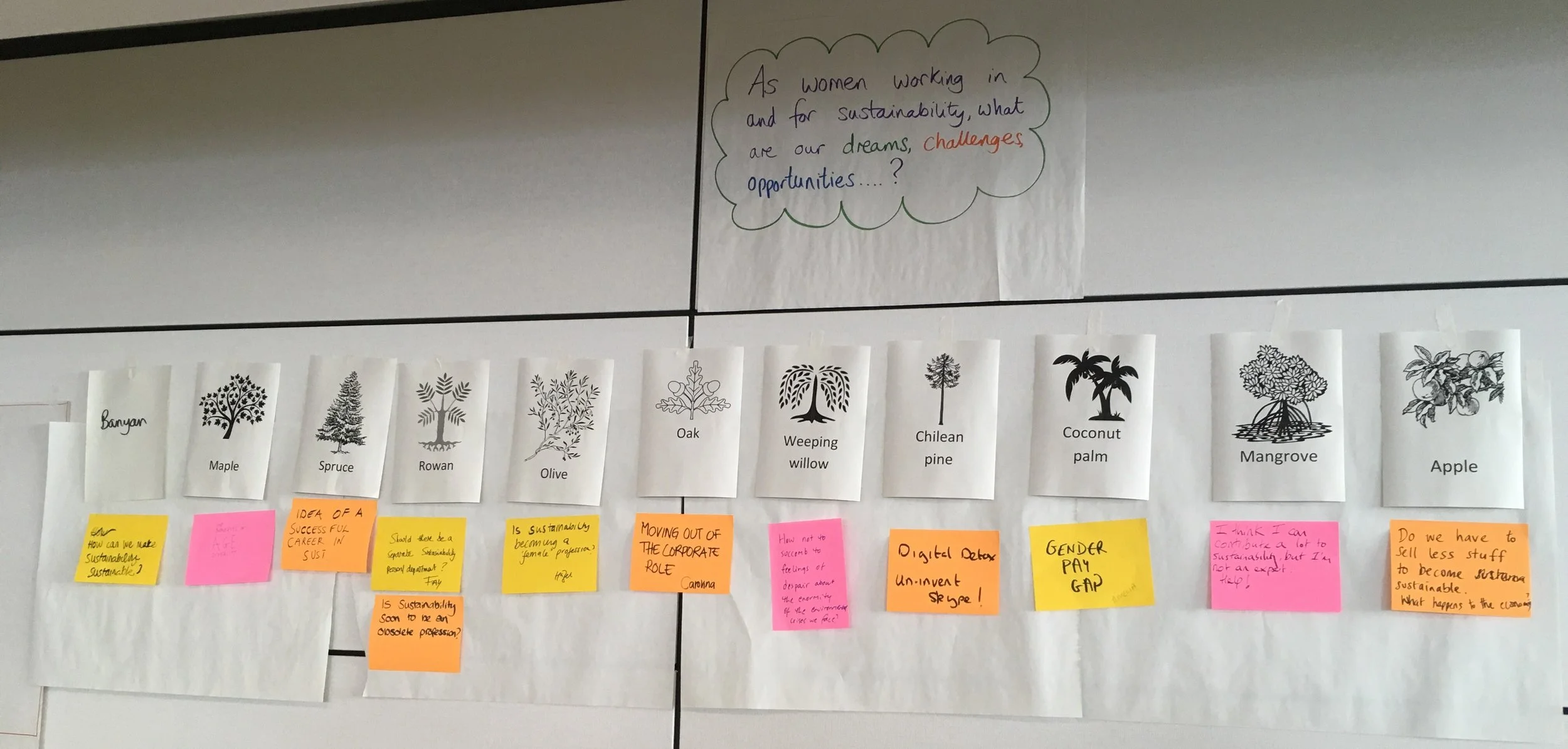When I first met with Brigid Finlayson and Carolina Karlstrom, to see whether we could work together to create the first She is Still Sustainable, we talked a lot about the kind of event we wanted to make it. And our conversation focused a lot on mood, atmosphere, emotional tone: we wanted it to be “warm, safe, friendly event which is refreshing, inspiring and supportive”.
When I’m training facilitators, I spend a lot of time banging on about aims. Get your aims clear, and your event design will follow. And your aims will include task-focused aims like the things you want people to know, or tell you, or decide together during the event.
They will also include ‘mood’ aims. Do you want to spark curiosity? Do want to challenge people? Does it need to be sleeves-rolled-up and focused on action planning? Coaching approaches like the Thinking Environment, and facilitation approaches like the Art of Hosting, encourage huge attention to the physical environment when designing an event.
The feedback we got from women who came to She is Still Sustainable told us that we’d done a pretty good job creating the mood we were after. They said:
“I felt warm and supported”
“inclusive and engaging”
“thought provoking”
“inspiring”
“the chance to talk to women my own age about our storylines, personal and professional, without judgement and with great interest and compassion”
What did we do?
Here’s a few of the things that contributed to the mood:
We tried to write all our communications with those intentions in mind: emails, linked-in posts and eventbrite page told people what to expect, and were written with a smile on our faces!
We gathered biographical information and photos from participants in advance, and circulated them ahead of the event.
We bought flowers for the tables.
We set ground rules that supported sharing - “keep people’s confidences” – and were gentle – raising an arm for silence, rather than shouting or ringing a bell. This worked like magic!
We addressed the difficult topics of diversity and despair head-on in the agenda – the difference our differences make, looking after ourselves while we look after everything else – demonstrating that conversations about those things were welcome.
We made time in the agenda for structured networking and small group conversations – sharing life stories in pairs, co-coaching, open space sessions.
We were open about our own stories.
As an organising team, we treated each other with kindness and respect, and were supportive of each other.
The open space sessions, where everyone gets a chance to set the agenda and be part of the conversations they are most drawn to, included groups talking about things which wouldn’t get a look-in at a traditional sustainability conference: age; sustainability as a female-dominated profession; despair; moving into sustainability from a different career; writing your own hero’s journey; balancing the ‘performance’ of ambition with being our authentic selves. This is testament to people feeling safe enough to share quite personal things. (There were also the more expected topics e.g. building a different and sustainable economic system; how to define the vision of the society we want; fantastic elevator pitches; should organisations have a separate sustainability department.)
Open Space topics, day one
Open space topics, day two
Did it work?
For most people we did create the atmosphere we intended, and on the whole it was a hit – 84% gave the event an overall 100% rating. But it didn’t completely suit everyone. Feedback included:
I left feeling a little conflicted - while I felt warm and supported I did not feel particularly energised or inspired. The only analogy I can think of was that it was a bit like taking a warm bath ... I usually prefer an invigorating shower. It wasn't the wrong feeling at all, just one I enjoy on occasion rather than regularly!
I’m still pondering whether we can have both.
Over to you
What do you do, deliberately or inadvertently, which creates a mood? Share your perspective in the comments.



